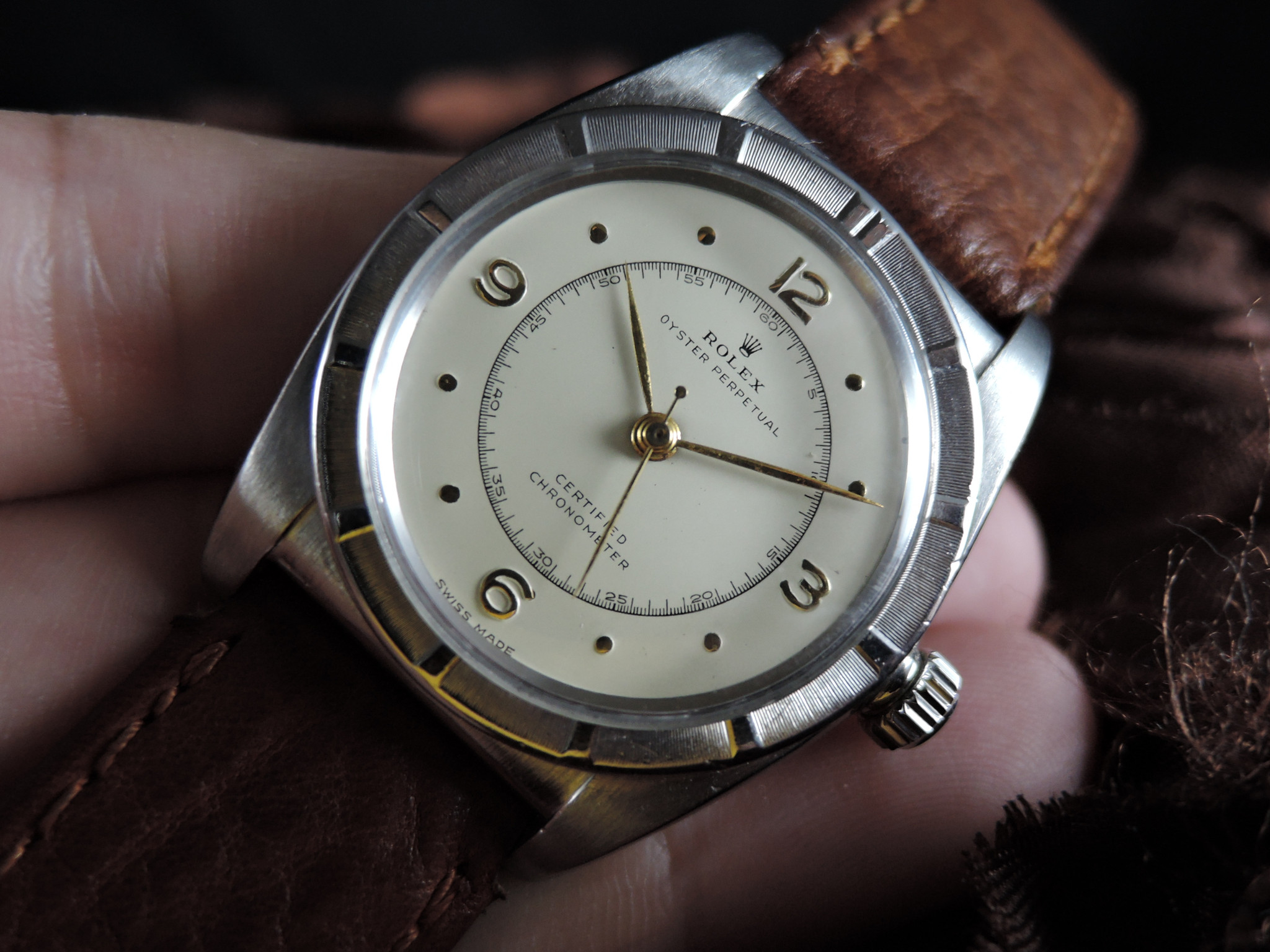The Rolex Bubbleback
One of the most popular models of Rolex is the Bubbleback. Launched in 1933, it was also one of the early Rolex models. The creation of this model was a significant event for Rolex because it featured the first Auto-Rotor. The Auto-Rotor signified Rolex’s success in developing a self-winding movement. Today, the Bubbleback is one of the most sought after and collectible wristwatches in the world market because production was discontinued in the early 1960s.
How did Rolex Succeed in Creating the Bubbleback?
In the 1920s, numerous watch-making companies were trying to create a self-winding movement. They kept attempting to incorporate slight modifications to Harwood’s self-winding watch that featured a no winding stem. However, Rolex was following altogether a different path. It experimented with its existing movements and looked for a new solution to the old challenge. Finally, in 1931, Rolex created the Auto-Rotor movement from an existing Aegler movement (subsidiary seconds Hunter 8-3/4”’). This invention resulted in a “perpetual motion” wherein the winding mass could turn smoothly both clockwise and counter-clockwise and pivot a full 360 degrees on its staff in the center of the movement. In 1932, Rolex patented its first successful self-winding perpetual wristwatch. One year later, the Rolex Bubbleback was introduced into the market. Due to unsuccessful attempts in the past and the resulting skepticism in the public eye, Rolex tried to publicize this new model as “the watch sensation of 1934”.
The fascinating historical marker is the watch never had “Bubbleback” engraved anywhere on it, and was never officially designated that title. Instead, it bore “Rolex Oyster Perpetual” just below the 12 o’clock position. How did it come to be known as “Bubbleback”? Well, the answer lies in its bubble-shaped, thicker case back. The thick Auto-Rotor led to an over sized mechanism which needed a thicker case. Another nick name for this model had been “Ovettone”. This Italian word means “little egg”.
Notable Changes Introduced Overtime
The first Rolex Bubbleback was the model 1858 powered by the Ref.520 movement. The sweep versions were powered by the Ref.530 movement. The earliest Bubbleback models featured a 3 piece case and a deeper case back. In 1936, Rolex rolled out two new models: 3131 and 3132. Both these models sported a new 2-piece case and new modified movement 9 ¾”’. The only difference between the models was that while the Model 3131 was powered by the Ref.620 (subsidiary seconds), model 3132 was powered by the Ref.630 (sweep seconds). It is interesting to note that the early Bubbleback watches were the first Rolex models to be made available in the stainless steel material known as Steelium. Some models were also made available in Rolesor (steel and gold combination). The two terms, Steelium and Rolesor, were coined by Rolex and subsequently patented in 1931 and 1933 respectively.
A significant breakthrough took place in 1935 when the Bubbleback models were equipped with a new streamlined balance wheel known as the “Super Balance”. This improved the functioning of the Auto-Rotor. Rolex went one step further by marketing its Bubbleback models in three sizes so that they could appeal to men and women alike. In 1941, a ladies Bubbleback model was launched, powered by the Ref.420 movement. However, no sweep version of the model was made available to the ladies. Later, in the 1950s, some Bubbleback models, such as model 5018, were introduced featuring “Bombe lugs”.
Many other modifications, cosmetically as well as technically, were introduced over time, finally leading to the development of a new Rolex model called “the Big Bubbleback”. The Big Bubbleback led directly to the development of the Rolex Datejust, which eventually became one of the flagship models of Rolex.
